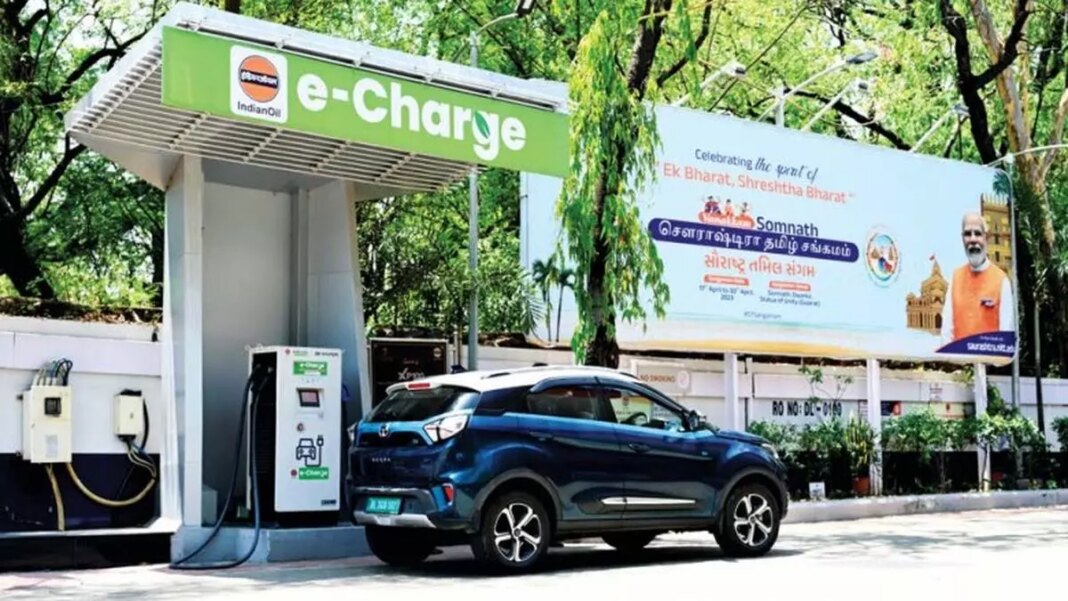In Short:
In FY24, India’s major oil companies added over 7,800 electric vehicle (EV) charging stations, boosting the total to nearly 17,000 nationwide. Indian Oil Corporation leads with 10,028 stations, while Bharat Petroleum aims for 7,000 and installed 2,443 new stations this year. Hindustan Petroleum added 1,773 stations. Government support and lower GST are increasing EV adoption, now at 8,000 buses and growing vehicle segments.
India’s Surge in Electric Vehicle Charging Stations
In an exciting leap towards **sustainable transportation**, India’s top three oil marketing players—**Indian Oil Corporation (IOC)**, **Bharat Petroleum Corporation (BPCL)**, and **Hindustan Petroleum Corporation (HPCL)**—have made impressive strides in expanding the network of electric vehicle (EV) charging stations. In the fiscal year 2024 (FY24), these companies launched more than 7,800 new charging stations!
Building a Nationwide Network
Together, these **public sector giants** have now established an extensive network of nearly 17,000 charging stations across the nation. And this is only the beginning—their commitment to further expansion promises even greater access to EV infrastructure moving forward.
Indian Oil Corporation Leads the Charge
**Indian Oil Corporation** took a significant step in FY24 by installing 3,601 new EV charging stations. As of June 30, 2024, their total number reached 10,028 stations, accounting for about 60% of the total EV charging stations in India, according to their latest annual report. Additionally, IOC is shaking things up in the battery space, offering battery swapping services at 99 of its fuel stations. In a groundbreaking initiative, they have partnered with **Sun Mobility Pte Ltd** from Singapore to create a comprehensive battery-swapping network all over India.
BPCL’s Vision for the Future
On the other hand, **Bharat Petroleum Corporation (BPCL)** is not lagging behind in this electrifying race. At their recent annual general meeting, **Chairman and Managing Director G Krishnakumar** shared their ambitious targets for growth in the EV charging infrastructure. BPCL has already set up over 3,100 charging stations and is aiming for an impressive 7,000 stations in the near future.
In FY24 alone, BPCL commissioned 2,443 new charging stations at its retail outlets, and they have exciting plans ahead: introducing an additional 3,500 fast-charging stations along 150 highway corridors in FY25. Furthermore, BPCL is pioneering the **Highway Fast Charging Corridors initiative**, which will expand its fast-charging network to 900 stations across 120 crucial corridors. Over the next five years, they plan to install fast chargers for four-wheelers at around 6,000 retail outlets across 400 highway corridors, targeting high-traffic routes like the **Golden Quadrilateral** and **North-South/East-West highways**.
HPCL Joins the EV Revolution
**Hindustan Petroleum Corporation (HPCL)** has also made significant contributions, adding 1,773 EV charging facilities in FY24, which brings their total EV-capable retail outlets to 3,603.
Support from the Government
With the support of initiatives like the **Phase II of the FAME India** scheme, the **Ministry of Heavy Industries (MHI)** has allocated a substantial capital subsidy of ₹800 crore to the three companies for establishing **7,432 EV public charging stations**. Additionally, they have set aside ₹73.50 crore under the FAME-II scheme to upgrade 980 existing low-capacity charging stations throughout the nation.
The Road Ahead for Electric Mobility
Thanks to supportive policies such as reduced GST on EVs and programs like FAME and **PLI**, the adoption of electric vehicles in India is picking up speed. According to **Shailesh Chandra**, Vice President of **SIAM** and Managing Director of **Tata Motors Passenger Vehicles Ltd.** and **Tata Passenger Electric Mobility Ltd.**, “India currently boasts over 8,000 electric buses in operation. In terms of **two-wheelers**, EV penetration has reached 5%, while the **three-wheeler segment** has hit 15%. For four-wheelers, the penetration rate stands at 2% with more than 200,000 electric vehicles on the roads. With over 12,000 public charging stations available, EVs are becoming increasingly practical and appealing for consumers.”





